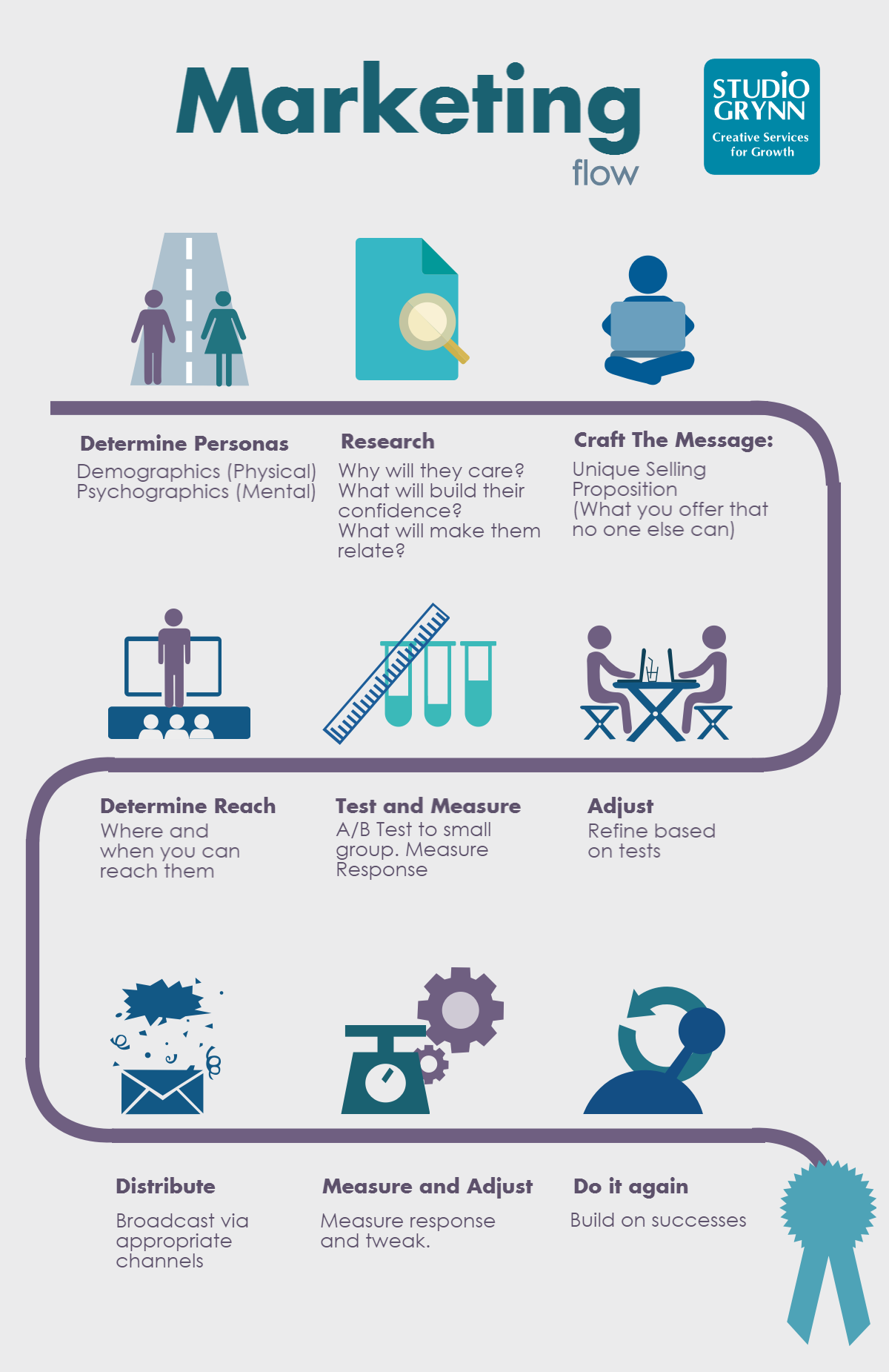Category Archives: Business Development
The Critical Experience the Success of Your Business Depends on
If you are an entrepreneur, member of the C-Suite, VP, Manager or other leader, you likely possess many areas of expertise. The combined level of such expertise in your company makes it special, and in some cases, sets it clearly apart from the competition. While very important, it’s not this type of experience that is the final deciding factor in your success.
The experience we’re discussing today is that of your clients and end-users, and what they experience in every phase from first exposure to your brand through post-sale follow-ups and beyond. The experience that occurs with your company is everything to the client. If you go above and beyond in providing an excellent experience you gain repeat business, referrals and brand advocacy. Give an experience that is just good-enough and you have positioned yourself in the midst of the pack, not ahead of it. There are no rewards for doing what you should be doing anyhow.
By nature, we humans emotional beings.
Regardless of how analytical we think we are, in the end our decisions come down to “does it feel right?” We eventually settle into a decision and have a resulting life experience. During said experience we are having emotional responses and at some point via the collection of emotions, we begin to form opinions about the correctness of our decision. If our feeling is that we’re having an experience that is positive, we likely conclude that we made good choices, and vise-versa.
The emotions your prospect or client feel about your company begin to tally from the moment they are first exposed to your brand. Everything someone experiences about your company, from it’s name, advertising, the look and feel of your website, logos, tag-lines, copy, images, word of mouth. etc. – all of it adds up in emotional responses that encourage or discourage that person to continue onto the buying process. Once a client is on-board and officially doing business with you, you are consciously and subconsciously evaluated and compared to every other business experience in this person’s past. Question is; are you setting a new bar for the quality of their experience, or are you reaching for a bar set by someone else?
A few things to consider:
Whatever your target audience is experiencing about your brand at any moment; in their mind THAT is part of their experience of your company. It can be as simple as your logo on a cup, the uniform of person stocking a shelf, or a full blown interaction with teams of your employees. What they are facing at that moment leaves an impression and creates emotional responses.
Your website is viewed as a reflection of what it’s like to work with you. The website experience should be filled with ease, grace and maybe a little fun. If information is hard to find, too wordy, too technical, poorly written or otherwise challenging; your business will be perceived as hard to work with. Not enough information and you may appear un-knowledgable. Good design with client centric content leaves an impression of professionalism, trust and sense of tenure in your industry.
The biggest mistake companies make in social media? Not being on social media. Make sure you have a good social media team that can engage with a personality that makes your followers happy and represents your brand clearly. Social media is a dialogue, not a monologue; make sure your social content is client-centric. Content that is all about your company is sending a clear message that your company comes first and the client comes second. No-one wants to have a conversation or relationship with someone who only talks about themselves.
Always look for ways to improve your client’s experiences. “But John, we already have the best customer service in our industry.” Bunk. Every company says that, most believe it, and if you truly think your competition isn’t trying harder than you are, you may as well close the doors now. Sit on your laurels and it won’t be long before they are miles ahead in the experience they provide. We all have clients that tell us how great we are. I’m sure you understand that your competition has their fans too.
Making Change
Learn how to really listen to clients and staff, and include listening techniques in all of your employee training. Good listening allows your front-line team to hear where improvements can be made, get to the heart of any dis-satisfaction and find the right and perfect resolutions. Hearing what you are doing right helps make good decision on what to keep and what to toss out. Bad client experiences are inevitable. It’s what you do to turn those around that will create brand advocacy and positive reviews and good listening provides clues on what client expectation was left unmet.
You can have the wisest, best-educated, most experienced team in your industry, and have paid the top branding agencies to create the greatest magic show, but if your clients aren’t having consistently amazing experiences with you, they are prime pickings for a competitor who can and will deliver.
Have a great experience or a nightmare story to share? Post it in the comments below so we can all learn from them.
Here’s to your success!
Never Have a Cranky Client Again. Yes it’s possible.
We all know how to make our clients happy: just give them what they want. Sounds pretty simple, as long as you know their desires. Most client (or relationship) dissatisfaction comes from either an expectation left unmet, or something unexpected happening that is perceived to be “wrong”. So if the happiness revolves around meeting or exceeding expectations, you have three viable options:
Read their minds to understand what they expect – then deliver.
Ask them what they expect – then deliver.
Tell them what to expect – then deliver.
Yeah, that first one just isn’t going to happen. The second, while a good exercise, basically puts the client in control of your business and would be a constantly moving target with every new client. But the third one – that’s the magic button.
You may be aware that if you do any kind of marketing at all, you are already telling your prospects and clients what to expect. If your brand message is that your company is approachable, easy-going, socially aware, and affordable; you have just told your audience to expect those traits from you. You have made a promise and now they expect you to deliver.
Some expectations might be a no-brainer and are often just assumed, such as a restaurant is expected to provide an enjoyable meal. A clearly communicated expectation happens when you call a plumber to clear a clog, you expect they will clear the clog and not re-plumb your house. Anyone who’s booked an appointment at a busy doctor’s office knows the disappointment of sitting in the waiting room an hour or so after your appointment. It’s not fun, we might get cranky. That crankiness happened because we clearly expected one thing and instead received something we didn’t want.
Hidden danger lurks, and it’s called the unknown expectation.
These are expectations that the client has established towards us that we know nothing about. Often the reason these hidden expectations even exist is because we didn’t tell the client right up front what they should expect, so they fill-in those blanks for us. Like a doggie landmine, we only discover one after we’ve stepped right in the middle of it, they both stink, and neither situation is fun to clean up.
The best defense here is a superb offense.
Rather than making room for misunderstandings, we set the expectations for them and ahead of time. We do this by providing full details as it relates to them through the entire process from pre-purchase decision making all the way through to post purchase followup. Don’t bother them with behind the scenes minutia, just provide the details for things that they will interact with during and after the process. Prices, what will happen when they call, how your ordering system works, how often you update on progress, delivery dates, payment types accepted, return policies, guarantees, your follow up policies etc. If it’s forward facing, make it clear. If they book a meeting, tell them before hand what will happen at that meeting and the expected results. Shock and awe has it’s place, just not with a client. Save the surprises for positive one’s like over-delivery.
By communicating how things will happen during the process, you are telling your client what to expect and when – you are setting their expectations for them. When things are clearly outlined, there is no room for hidden assumptions. If it’s based on your schedule and processes, meeting the expectation should be easy. If they hear something that won’t work for them, there is still time and opportunity to negotiate, and thus side-step the landmine.
Sometimes the game just changes.
If mid-stream you discover that an expectation can’t be met, communicate a new expectation to them. When projects are in motion, keep the client informed, don’t keep them guessing. Give clients all possible advance warning if an expectation such as a due date won’t be met. They may be unhappy about the changes, but you’ve given them an opportunity to adjust things on their end. Chances are improved for a better outcome than had you waited till the job is due. The bonus to the early warning: instead of looking undependable you’re now seen as professional and a good communicator who’s invested in their best interests.
In general, your company should be able to consistently meet the expectations it sets. If not, then either change what you promise so it’s truthful and dependable, or adjust within so expectations are consistently met or exceeded.
Will this article change the way you lead your business? Comments and questions are encouraged, and well…expected ;-).



